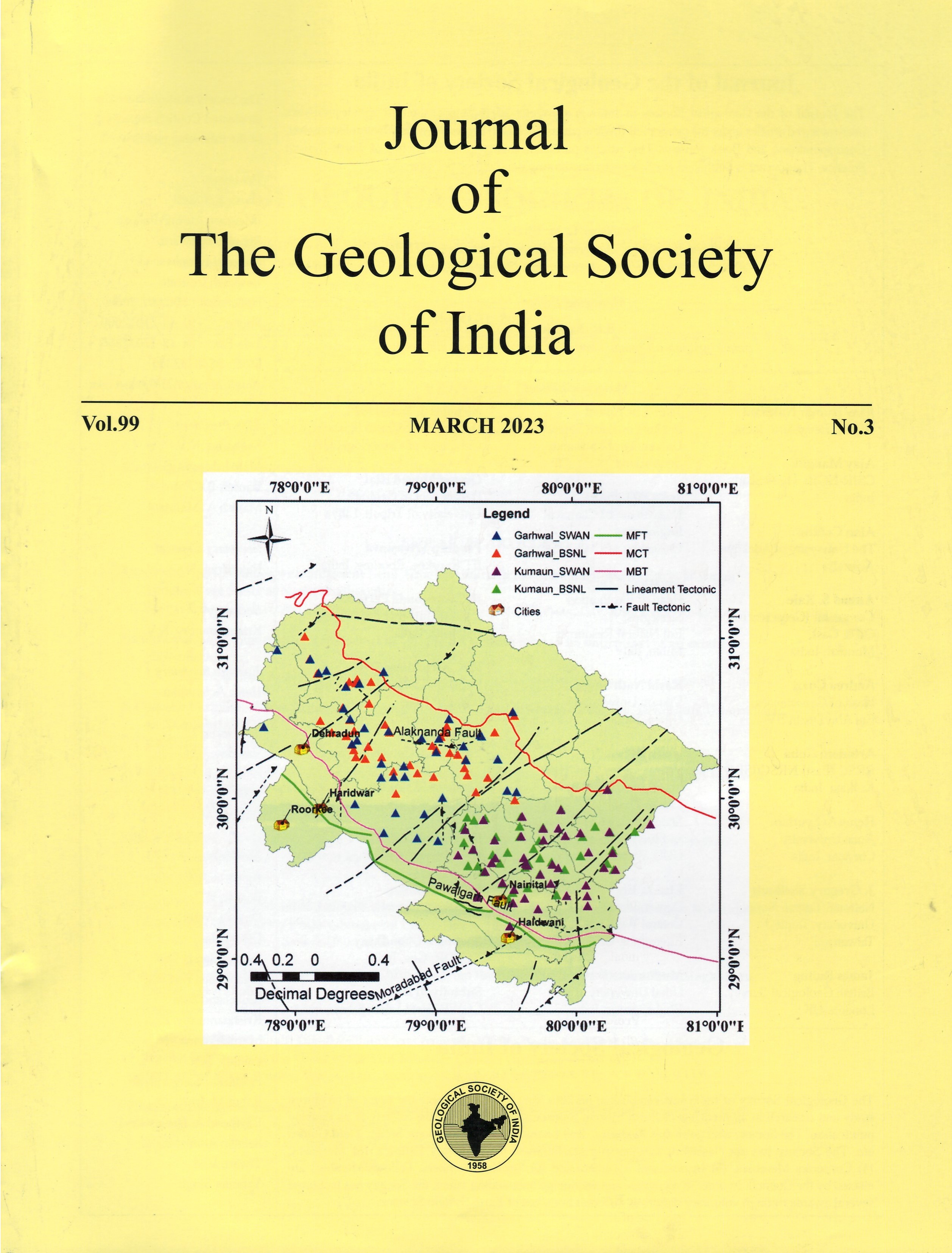Ubiquitous Chemical Signature in Khondalites of Eastern Ghats Granulite Belt, a Possible Explanation
DOI:
https://doi.org/10.1007/s12594-023-2323-zKeywords:
No KeywordsAbstract
Khondalite, iteratively entangled with granitic leucosome, overwhelmingly represent a suprasolidus assemblage and a gross restitic signature, with negative K, Rb and Sr spikes, positive Cr spike, moderately enriched REE pattern and strong negative Eu anomaly. Moderate K/Rb ratio and weak or no HREE depletion of khondalite are ascribed to high grade metamorphism with dehydration melting signature, keeping aside feldspar and garnet as peritectic phase. Pristine geochemical sedimentary character of khondalite signifies a sand-shale alternation deposited in a passive margin basin, with large degree of reworking, and felsic igneous provenance. Age of sedimentation of khondalite is close to 1400 Ma. Anomalously high iron content of the khondalites could be attributed to the fact that pristine sediments of khondalite represent an anaerobic sediment above the chemocline, between oxic and anoxic sediments, originated in passive margin setting with a moderate to weak supply of detritus, in gradual proliferation of multicellular organism during Meso-Proterozoic time.

 Rajib Kar
Rajib Kar






